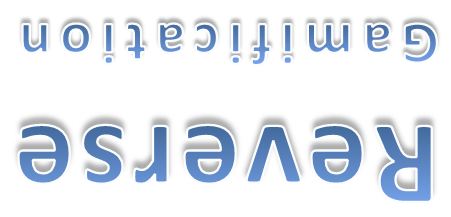Here’s concrete proof that Windows 8 is a puzzle that its intended users cannot solve unaided. Reverse gamification suggests that ultimately, this fact probably won’t make the slightest difference to its prospects for success
Pirillo’s dad is a regular Windows user. Presented with Metro, he’s totally flummoxed.
Just try to get your head around the mind-shredding possibility that a user interface can be all these seemingly totally contradictory things at once, when compared to Windows 7:
a d v e r t i s e m e n t
Is your startup accelerator in trouble?
- is the whole thing starting to look like a ‘one hit wonder’?
- were the applicants below expectations?
- are you feeling out of your depth?
- is the schedule beginning to look unrealistic?
- are you beginning to feel that you ‘went native’ with the founders’ optimism?
You’re not alone
You need to talk to us
We’ve been studying startup accelerators
It turns out these problems, and a whole lot more, affect all accelerators in their early stages
They can all be put right
- ‘dumbed down’
- harder for everyone to work out how to use
- more powerful for the power user
- actually easier to use for everyone eventually
It’s that problem of ‘interface simplification’ that we mentioned last time.
Get rid of the impractically intrusive (but up until now, seemingly unavoidable) clutter of complex and intrusively distracting interface features and you end up with a puzzle.
It looks neat, aesthetically pleasing.
But for the uninitiated, it’s a seemingly functionless puzzle.
What does it do? How does it do it?
Try this, try that: nothing!
Where’s all that important stuff that I understood and knew how to find?
Where are those buttons, labels, options, clues?
Nowhere.
Once upon a time, this would be curtains.
Your competitor’s product would be less of a puzzle and you’d lose the sale to them.
But this is the age of social media.
Tweet a cry for help, or ask a Facebook friend, or maybe even just search Google and find a video.
The puzzle-freaks will have squealed with delight when they cracked it and raced to be the first to put the solution in the public domain (trying to beat the sad characters who tracked it down in the product manual).
Remember also, that Metro is in beta: by the launch, Microsoft will (I imagine) have taken the embarrassment of the Pirillo-dad puzzliness debacle on board and gone crazy with that other mainstay of social media, YouTube.
The puzzle unlocks.
Now you can get back to doing all the things you want to do.
Then we can get back to trying to answer the real questions:
Can you now do all the those things faster and more seamlessly than you could before?
Does it make things that were slow, tedious, tricky, messy, troublesome and intimidating suddenly become painless and almost effortless?
This is what we want to know about ‘improved user interfaces’.
If social media successfully reverses the unarguably showstopping game that the Windows 8 Metro puzzle poses, AND Metro proves to be the success that Microsoft unquestionably needs it to be, then reverse gamification (i.e., puzzle-level interface ‘simplification’ which relies exclusively upon social media to overcome the ‘hypersimplified’ interface’s unavoidable lack of ‘initial intelligibility’, something which may prove to be the only way to provide simple interfaces for devices with the endlessly growing range of features which we have come to expect of those things we used to call ‘computers’) can be expected to ultimately play a role in just about every aspect of technology in our future.
Let the games begin.
Let puzzle freaks rejoice everywhere.
Let reverse gamification unlock the puzzles for the rest of us.


